Data security is now much more than just using passwords and security questions.
With the growing risks of hacking, strict privacy laws, and changing company policies, traditional methods are no longer reliable. That’s why many experts are now turning to biometric authentication for better protection and security.
According to recent mobile app statistics, the global market for authentication and identification is expected to reach $8.8 billion by 2026.
This clearly shows that biometric authentication is becoming more popular and will be the future of online security.
But what exactly is biometric authentication? How does it work? And most importantly, is it safe? Let’s explore these questions so you can decide if it’s the right choice for your app, website, or software.
So, let’s begin!
What Is Biometric Authentication and How Does It Work?
Biometric authentication is a security method that verifies a user’s identity by using their fingerprints, retinas, palms, voices, and facial features.
This stores the user’s information to verify their identity when they access their account. For example, we use a fingerprint or facial recognition method to open the mobile phone.
However, when a user scans their fingerprint or any other biometric traits, they grant access to applications, mobile phones, or any other devices.
This technology is also widely used in mobile apps for businesses to enhance security and improve user experience.
It is the most secure type of authentication that many organizations, like banks, offices, etc., leverage.
Now let’s check out the working mechanism of a biometric authentication system.
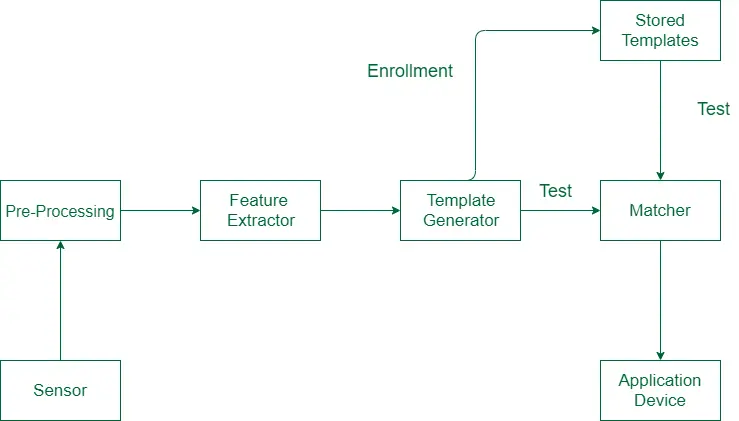
- Firstly, the system collects the unique body traits like fingerprint, face, voice, or eye scan with a sensor.
- Now, the system converts this data into a digital format and creates a unique code or pattern that shows a person’s biometric feature.
- This pattern is safely stored in a secure database, like a mobile phone or a server, for future comparison.
- Now, when a person tries to log in or unlock something, the system scans their biometric feature again and creates a new code from it.
- Finally, the system then compares the new code with the stored one. If it matches, access is granted, but if not, access is denied.
Types of Biometric Methods
Now that you know what biometric authentication is, it is vital to know its different types and usage.
Here are the different types of biometric authentication methods that you should check out.
1. Fingerprint Recognition
In this type of biometric authentication method, the system automatically identifies a user’s identity by comparing their two fingerprints.
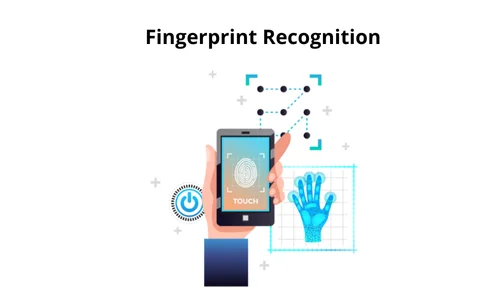
It is one of the most common biometric authentication solutions for verifying a person’s identity because it is easy to obtain in comparison to other technologies.
It is used for mobile and tablet security, physical access control, computer logins, payment systems, border control, and so on.
2. Facial Recognition (Face ID)
The next most popular biometric authentication is facial recognition in mobile apps. A user’s facial ID, like a face scan or face shape, is required to verify their identity.
Face ID integration in apps can scan the user’s face or examine the shape of each face to verify their identity.
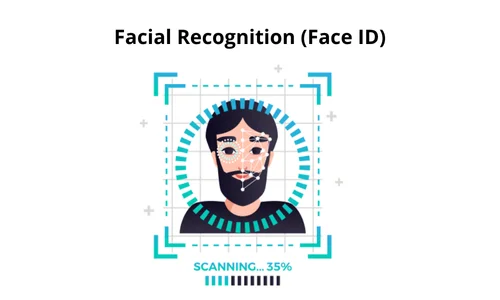
The system analyzes the distance between the eyes and nose, or we can say, elements of the face. After that, the system makes a digital model of facial data.
When users want to log in, the system scans a face in real-time and compares it with the stored model.
3. Voice Recognition
Voice recognition or speech recognition is a method that enables systems to understand, analyze, and process human voice.
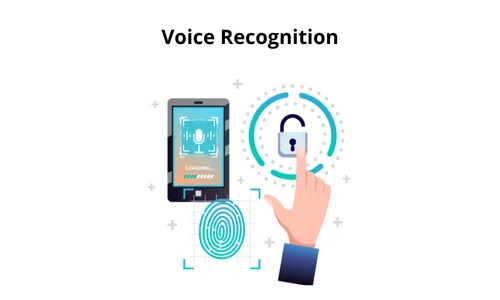
It converts voice into text that a system can understand. This method is widely utilized in different app security solutions like virtual assistants, customer support bots, and transcription services.
Siri, Alexa, Google Assistant, etc, are some of the popular voice recognition app integration methods.
4. Iris Recognition
Iris recognition is a technology that is used by scanning the user’s eyes. Generally, it is of two types, retina recognition and iris recognition.
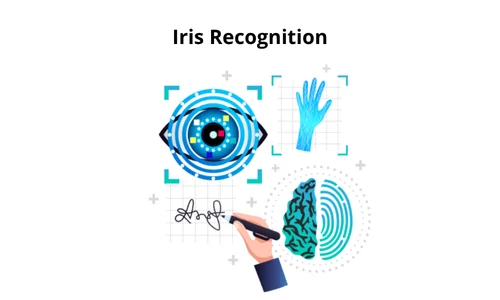
In the retina recognition method, a sensor shines a little light into the user’s eye to check the different patterns of blood vessels in the eyes.
However, an iris scan for mobile authentication analyzes the color rings present in the iris.
It is mainly used to grant access to secure areas like buildings, law enforcement, and so on.
Key Benefits of Biometric Authentication in Apps
Many modern applications now use biometric authentication methods instead of passwords. This change brings multiple benefits that make using apps easier and safer.
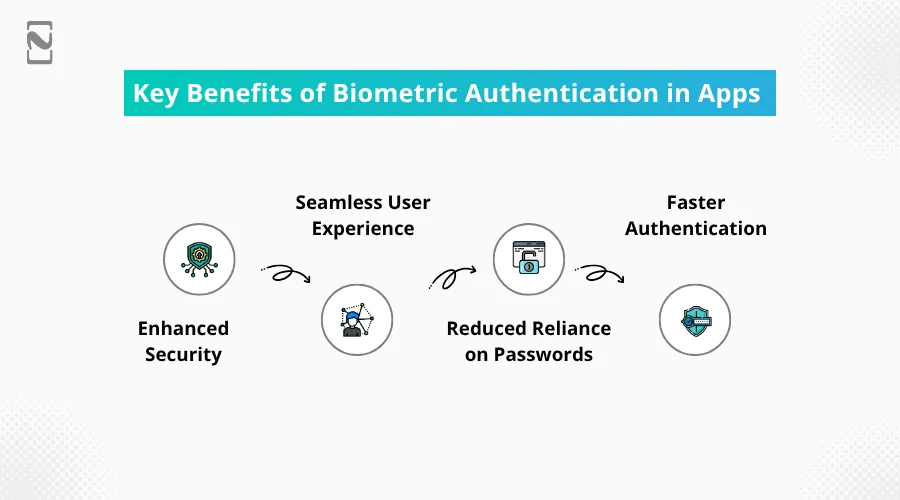
Below are the key benefits of biometric authentication methods.
I) Enhanced Security
Biometric authentication improves mobile app security. Since fingerprints and face scans are hard to copy, they help protect the app from unauthorized access.
Biometrics are unique to every person, and it is not like a password, which can be easily leaked or guessed. This can not be easily hacked or cracked by hackers.
It adds an extra layer of protection or security that keeps a person’s data secure.
II) Seamless User Experience
Biometric identification makes logging into mobile applications easier. Users do not have to remember hard passwords or type them every time.
It is very simple, just a quick scan of the user’s finger or face, and they are in. It saves a lot of time and makes the mobile application more safe that automatically gives a seamless user experience.
III) Reduced Reliance on Passwords
As we all know, remembering passwords can be a real headache. You have to change them frequently and ensure that they are strong enough to crack.
With biometric authentication, there is no need for passwords. This reduces the chances of forgetting passwords and needing to reset. It also minimizes the risk of weak passwords that are used for different mobile apps.
IV) Faster Authentication
Biometric secure mobile login is really quick and fast. Instead of typing a username or password, users can unlock a mobile app in just a second with their fingerprint or face. It is helpful when users are in a hurry or need to access something really important.
Use Cases in Different Mobile App Categories
Biometric authentication is widely adopted by many different industries for mobile app safety and security of users.
So, here are the biometric authentication use cases for different mobile app categories.
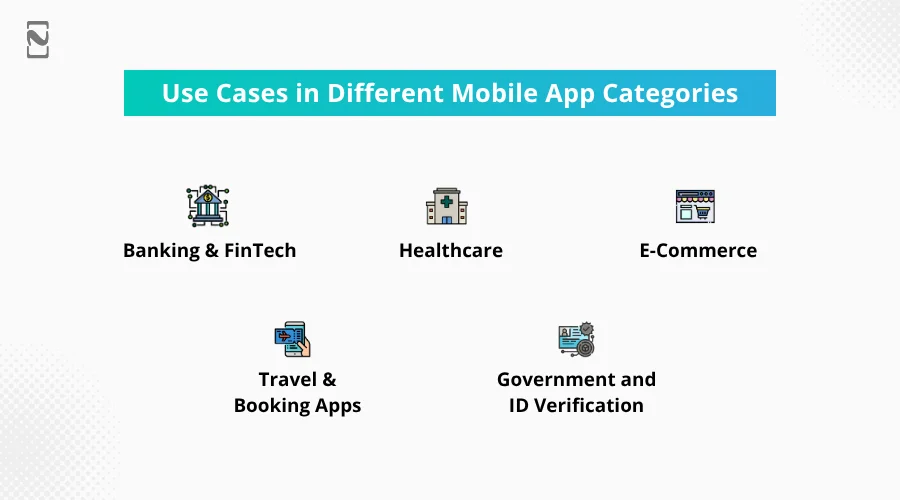
Let’s have a look at them.
► Banking and FinTech
Banking and fintech applications help users to manage money, check balances, and send payments. These applications are highly secure.
It deals with sensitive information like account numbers, transaction history, and personal data.
Thus, security is a top priority in these apps. Biometric authentication is used for secure login, transaction approval, account recovery, and so on.
For example, when you log in to the banking app, it requires a fingerprint or face scan.
Also, when you send money or make payments, you need to scan your fingerprint for authentication, which adds an extra layer of security.
So, using biometrics in financial apps not only protects the user’s money but also builds trust in digital banking services.
► Healthcare
Healthcare mobile applications are the second most important category that uses biometric authentication. These applications hold a wide range of patients’ personal and professional medical histories.
It is vital to ensure that only the right people can access and share this information. That’s why biometric identification is used in healthcare apps to protect data and ensure patient safety.
API security is important to keep the communication between the app and the servers safe from hackers.
This ensures that only the patient or an authorized person can access the healthcare apps with biometric login. Both patients and doctors can use biometrics to verify their identity before a video consultation.
This use of biometrics increases the patient’s privacy and fulfills strict data protection.
► E-Commerce
In e-commerce applications, biometric authentication helps users make secure and fast purchases. For example, when a customer wants to purchase something from an app like
Amazon will confirm a payment with their fingerprint scan instead of entering a whole complex password. This not only saves time but also prevents scams.
Another use case is for logging in to the mobile app safely. If someone uses a shared or public device, biometrics make sure that only the real user can access their personal account, history, and saved payment methods.
► Travel & Booking Apps
In travel and hotel booking apps like Airbnb and MakeMyTrip, biometric authentication is used to make quick check-ins. It is also used for bookings.
For example, when a user wants to book a flight or hotel room, they can use fingerprint authentication in apps to authorize the payment.
Another use case is auto-login with biometrics when users are in a hurry, like checking flight status at the airport.
In addition, many travel apps use biometrics to verify a user’s identity during cancellations or refunds. This ensures that the account holder can make any changes to bookings.
► Government and ID Verification
Lastly, biometric authentication systems are widely used in the government sector for ID verification. Many government-related apps use biometrics for secure identification.
So, if a user wants to access personal documents like a Voter card or a driving license, they have to scan either their fingerprint or face to confirm their identity.
In apps related to taxes, voting, or welfare schemes, biometric login helps ensure that only the rightful person is using the service.
Some apps also use biometric identification checks during the eKYC process. It is required for opening a bank account or applying for some government exams.
Future Trends in Biometric Security for Mobile Apps
Now that you know the use cases of biometric authentication, it is time to know about the future trends in biometric security for apps.
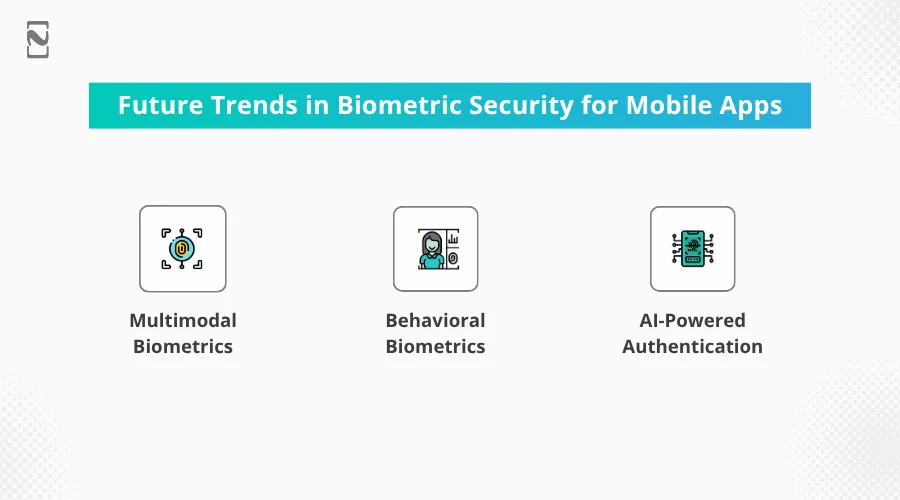
So, let’s have a look at the future biometric app security trends below.
♦ Multimodal Biometrics
The multimodal biometrics usage merging with multiple traits like facial, fingerprint recognition, and voice recognition is forecasted to become the new trend in high-tech security areas like banks.
These systems can be relevant in space-like government buildings, airports, and big institutions where high-tech security is mandatory.
Multimodal systems are also projected to become commonplace in financial institutions. This becomes a commonplace in financial places like banks for transactions and customer services by 2025.
♦ Behavioral Biometrics
The next trend you are going to see is behavioral biometric authentication, which focuses on identifying individuals based on their unique behavioral traits. This includes a gait analysis, which studies the way people walk, and typing patterns.
These biometric systems are less annoying than traditional biometric methods. It can provide continuous authentication without requiring any active effort from the user.
However, it is said that the behavioral biometrics authentication method can be less effective and successful. Hackers can manipulate the systems with fake behavioral patterns by copying the user’s behavioral traits, like typing patterns.
♦ AI-Powered Authentication
AI is the future, and this is going to be the next biggest trend in biometric authentication. Soon, AI-powered biometric systems can be used to identify a user’s identity.
AI is used to make fingerprint, face, and voice recognition smarter and more reliable. It helps systems learn from millions of samples to detect small changes. For example, if someone’s face ages or if the lighting is poor.
It also helps spot fake attempts, like using photos or voice recordings to trick the system. This makes biometric authentication more secure and faster. AI can even work in real-time. This helps many applications quickly verify users with high accuracy.
Why Choose Nimble AppGenie for Secure App Development?
Nimble AppGenie is a reputable mobile app development company that focuses on crafting secure mobile apps. Our expert team follows the latest security standards, like data encryption and biometric authentication methods.
One big reason to choose us is our strong API development expertise. We create secure and fast APIs that enable your mobile app to connect safely with other systems. It helps your app run smoothly while keeping data secure.
If you partner with us. You get a reliable partner who understands both security and performance. From healthcare apps to fintech and banking apps, Nimble AppGenie ensures your mobile app is protected from the inside out.
Conclusion
Biometric technology is a secure way to protect mobile applications. From banking and healthcare to e-commerce and travel, it adds strong protection while improving the user experience.
With future trends like AI and multimodal biometrics, the technology is only getting better. So, if you want a secure and modern application, then adding biometric authentication is the best move for your business today.
FAQ
Biometric authentication in mobile apps is a unique identity verification method that verifies a user’s identity for login through different biological traits. It can be the user’s face, palm vein, iris, fingerprint, or voice.
Iris recognition is considered the best biometric method and accuracy, which makes it the best choice for mobile app security.
Yes, you can use multiple biometric methods like fingerprint, face, or voice in one mobile app. This gives users more options and makes the app more secure and flexible.

Niketan Sharma is the CTO of Nimble AppGenie, a prominent website and mobile app development company in the USA that is delivering excellence with a commitment to boosting business growth & maximizing customer satisfaction. He is a highly motivated individual who helps SMEs and startups grow in this dynamic market with the latest technology and innovation.
Table of Contents




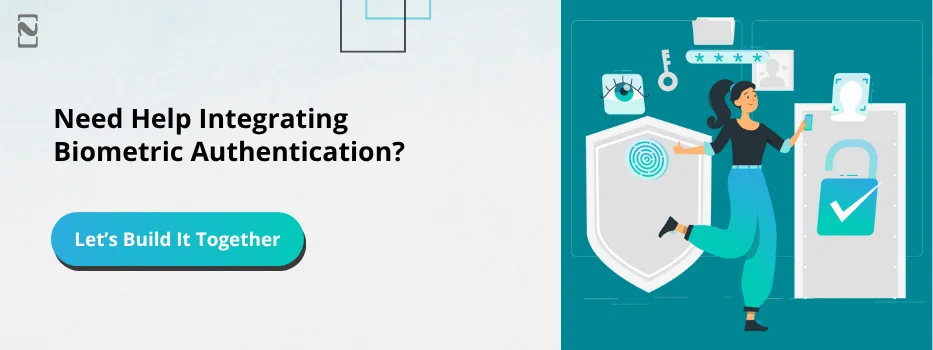
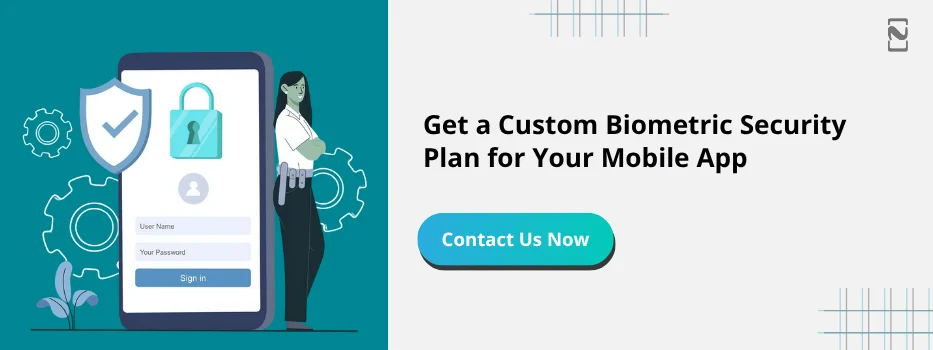
No Comments
Comments are closed.